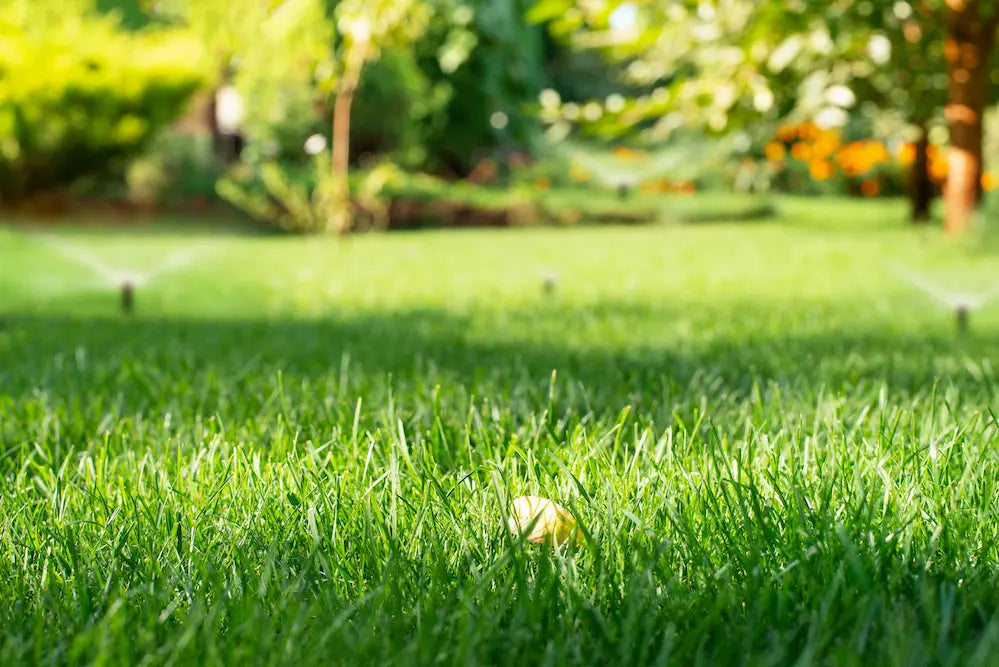A beautiful lawn doesn’t have to require hours of labor and constant upkeep. For homeowners looking to minimize their lawn care efforts, low-maintenance grasses offer a practical solution. These grasses require less mowing, watering, and fertilizing while still providing a lush, green appearance. This article explores the top choices for low-maintenance grasses and offers tips for easy lawn care.
What Are Low-Maintenance Grasses?
Low-maintenance grasses are varieties that grow slowly, require less frequent mowing, are drought-tolerant, and have minimal nutrient requirements. These characteristics make them ideal for homeowners who want to enjoy a beautiful lawn without dedicating a significant amount of time and resources to its upkeep.
Top Choices for Low-Maintenance Grasses
1. Buffalo Grass (Bouteloua dactyloides)
Buffalo grass is a native prairie grass that thrives in hot, dry climates. It requires minimal watering and mowing and is highly drought-tolerant. Buffalo grass has a soft, fine texture and forms a dense turf that resists weeds.
- Pros: Low water needs, infrequent mowing, drought-resistant.
- Cons: Best suited for full sun, slower establishment.
2. Fine Fescue (Festuca spp.)
Fine fescues, including creeping red fescue, hard fescue, and sheep fescue, are cool-season grasses known for their shade tolerance and low-maintenance requirements. They thrive in poor soil conditions and require less fertilization and watering compared to other grass types.
- Pros: Shade-tolerant, low water and nutrient needs, minimal mowing.
- Cons: Can become dormant in hot, dry conditions.
3. Zoysia Grass (Zoysia spp.)
Zoysia grass is a warm-season grass that forms a dense, carpet-like turf. It is highly drought-tolerant and requires less frequent mowing due to its slow growth rate. Zoysia grass also has good wear tolerance, making it suitable for high-traffic areas.
- Pros: Drought-resistant, slow growth, good wear tolerance.
- Cons: Requires full sun, slow to establish from seed.
4. Bermuda Grass (Cynodon dactylon)
Bermuda grass is a warm-season grass known for its durability and heat tolerance. It requires less water once established and grows densely, which helps crowd out weeds. Bermuda grass can handle heavy foot traffic and recovers quickly from damage.
- Pros: Heat and drought-tolerant, durable, fast recovery.
- Cons: Requires full sun, can become invasive.
5. Tall Fescue (Festuca arundinacea)
Tall fescue is a cool-season grass that is drought-tolerant and has a deep root system, making it suitable for low-maintenance lawns. It requires less frequent watering and fertilization and can handle moderate shade.
- Pros: Drought-tolerant, deep roots, moderate shade tolerance.
- Cons: Coarser texture, may need occasional overseeding.
Tips for Easy Lawn Care
-
Proper Mowing: Keep your mowing height higher to reduce stress on the grass and promote deeper root growth. Mow only when necessary, typically removing no more than one-third of the grass blade at a time.
-
Efficient Watering: Water deeply and infrequently to encourage deep root growth. Early morning watering is best to reduce evaporation and prevent fungal diseases.
-
Minimal Fertilization: Use a slow-release fertilizer tailored to your grass type and apply it sparingly. Over-fertilizing can lead to excessive growth and increased maintenance needs.
-
Soil Health: Maintain healthy soil by aerating annually and incorporating organic matter, such as compost. Healthy soil supports robust grass growth and reduces the need for chemical interventions.
-
Weed Control: Use mulch and ground covers in garden beds to reduce weed pressure on your lawn. Manual weeding and spot-treating problem areas with herbicide can also keep weeds in check.
-
Pest and Disease Monitoring: Regularly inspect your lawn for signs of pests and diseases. Early detection and treatment can prevent minor issues from becoming major problems.
FAQs About Low-Maintenance Grasses
1. What is the most low-maintenance grass?
Buffalo grass is considered one of the most low-maintenance grasses due to its minimal water and mowing requirements, as well as its high drought tolerance. Fine fescue and zoysia grass are also excellent low-maintenance options.
2. Can low-maintenance grasses handle foot traffic?
Yes, many low-maintenance grasses, such as Bermuda grass and zoysia grass, have good wear tolerance and can handle foot traffic. However, it’s essential to choose the right grass type based on your specific needs and climate.
3. How often should low-maintenance grasses be watered?
Low-maintenance grasses generally require less frequent watering. Water deeply once a week or as needed, depending on your climate and soil conditions. The goal is to encourage deep root growth, which enhances drought tolerance.
4. Are low-maintenance grasses suitable for all climates?
Low-maintenance grasses are available for both cool-season and warm-season climates. Fine fescues are ideal for cooler regions with shade, while buffalo grass and Bermuda grass are better suited for hot, dry climates. Choose a grass type that matches your regional conditions.
Conclusion
Low-maintenance grasses offer an excellent solution for homeowners seeking a beautiful lawn with minimal effort. By selecting the right grass type for your climate and following best practices for lawn care, you can enjoy a lush, green lawn without dedicating excessive time and resources to its upkeep. Whether you choose buffalo grass, fine fescue, zoysia grass, Bermuda grass, or tall fescue, these low-maintenance options provide an attractive and resilient lawn with reduced maintenance demands.








Reader Interactions